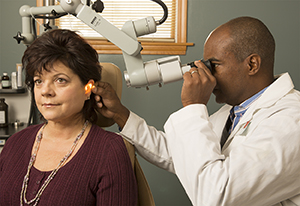Middle Ear Surgery: At-Home Recovery
Middle Ear Surgery: At-Home Recovery
The type of surgery you’ve had and your lifestyle will affect how long it takes you to get better. Plan on healing at home for at least 1 to 2 weeks. You can do certain things to speed the healing process. Be sure to call your surgeon if you have any questions or problems.
What you can do
Follow your surgeon’s instructions. Also, keep in mind:
Avoid washing your hair for as long as directed. And when showering or bathing, protect your ear with a cotton ball soaked in petroleum jelly.
Take pain medicines and antibiotics as directed.
Sneeze or cough with your mouth open to protect your ear.
Talk to your surgeon before flying, traveling in the mountains, swimming, doing aerobics, or playing contact sports.
Make sure you go to all follow-up appointments with your surgeon. He or she will change your bandage and check to make sure your ear is healing.
When to call your surgeon
Be sure to call your surgeon if you notice any of the following:
Bleeding from the ear that soaks more than one bandage
Fever of 100.4°F (38°C) or higher, or as directed by your healthcare provider
Pain that doesn’t respond to medicine
Ongoing dizziness
Nausea or vomiting
Weakness or numbness of facial muscles
Updated:
March 21, 2017
Sources:
Chronic otitis media, cholesteatoma, and mastoiditis in adults. UpToDate, Surgery of the Ear and the Lateral Skull Base: Pitfalls and Complications. Schick B. GMS Current Topics in Otorhinolaryngology Head and Neck Surgery. 2013:s1-s40.
Reviewed By:
Fetterman, Anne, RN, BSN,Kacker, Ashutosh, MD
